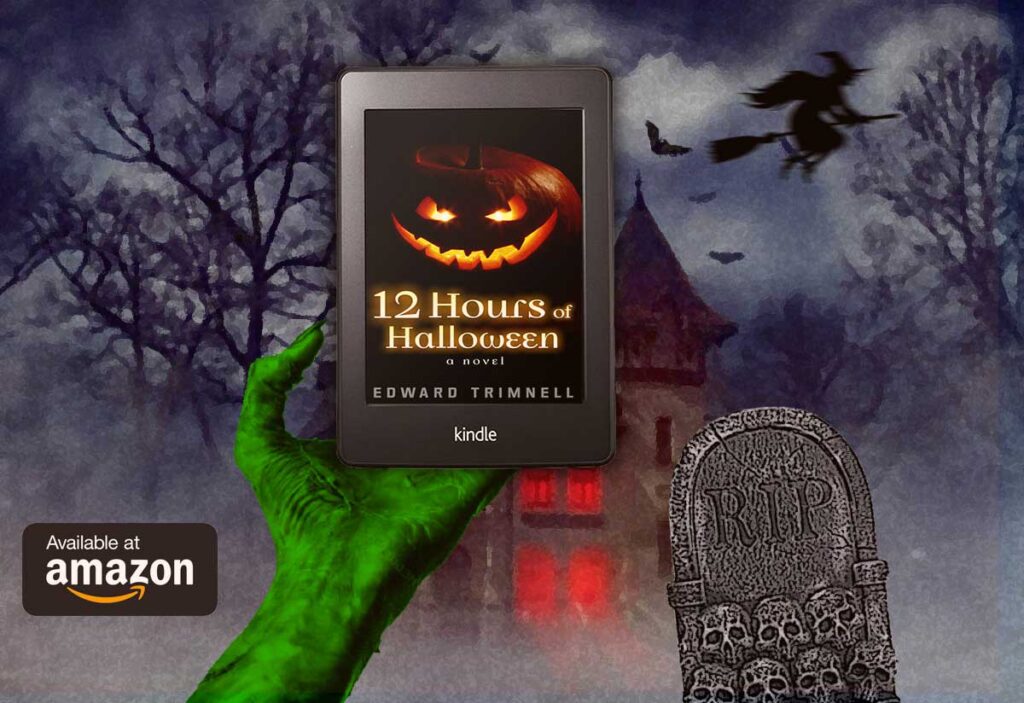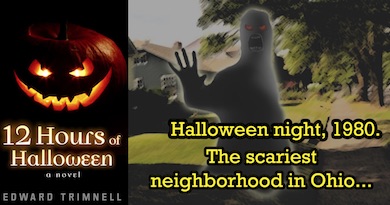How egg-throwing teenage boys ruined my last trick-or-treat
My novel 12 HOURS OF HALLOWEEN is a supernatural coming-of-age tale about three young friends who endure the trials of a 12-hour curse on Halloween night, 1980. To survive the night, they must battle vampires, animated trees, and the horrific creature known as the “head collector”.
12 HOURS OF HALLOWEEN is one of the most autobiographical novels I’ve ever written. Like the characters in the novel, I was 12 years old in October 1980. The suburban Cincinnati, Ohio setting is very similar to the one in which I spent my formative years.
That said, the main character of the story, Jeff Schaeffer, doesn’t have much in common with me, or with the boy I was more than 40 years ago. And while I had a group of friends, neither Leah nor Bobby is an exact representation of anyone I knew back then.
Oh, and I never did battle with any of the supernatural creatures that appear in the book.
Here is another point of fabrication: I went on my last trick-or-treat in 1979, not in 1980.
I set 12 HOURS OF HALLOWEEN in 1980 because some of the themes I wanted to explore required an adolescent perspective; and I was twelve in 1980, not in 1979.
But like the characters in the novel, I was somewhat torn (as were the adults around me) about the appropriate age for giving up the trick-or-treat ritual.
In the culture of those times, you were generally okay for trick-or-treating up to age ten or eleven. But once you reached junior high, well, people would give you funny looks if you showed up at their door on October 31st, asking for candy. And once you reached high school, you were definitely too old.
***
In 1979, therefore, my friend Ken and I decided to go out for “one last Halloween”, kind of like the characters in the novel. (Ken, being a year older than me, actually did turn twelve that year.)
I wore a prefabbed costume from Kmart. I don’t even remember what it was. (I seem to recall a green skeleton, but I can’t be sure.) Ken, however, had one of the coolest Halloween costumes I’ve ever seen—before or since.
This was the early Star Wars era, and every kid was a fan. Ken was no exception. His mother made for him a very elaborate imperial stormtrooper costume. This was not something store-bought. She made the whole thing from scratch. It was amazing.
Halloween 1979 in the Cincinnati area provided a clear, pleasantly cool autumn night. We set out a little after 6 p.m., and everything went fine…at first. Then we crossed paths with a group of teenage boys, a hot rod, and some eggs.
***
One thing I’ve noticed about the 21st-century: suburban teenagers are less mischievous than they used to be.
This could be because of helicopter parenting. How much trouble can you get into when your parents are tracking your movements on a smart phone app? Kids today are also very absorbed in virtual worlds of different kinds.
In the late 1970s, however, adolescent entertainment consisted of whatever was on network television (cable TV didn’t become common until about 1982), books, and other young people.
And since there were no parental tracking apps, your parents typically had only a vague sense of your whereabouts at any given moment.
In this atmosphere of fewer ready-made distractions and much less supervision, there were more motives and opportunities for getting into trouble. And plenty of teenage boys jumped at the chance.
***
This particular group of teenage boys, riding around on Halloween night 1979, had decided that it would be fun to throw eggs at the kids who were still young enough to go trick-or-treating.
They were obviously selecting their victims at random. I will retroactively blame Ken for our being singled out. His solid white stormtrooper outfit really did make him a target.
The car—it must have been a Dodge Charger or a Trans Am—slowed down as it approached. Ken and I had no time to assess the situation, let alone take evasive action. Then someone in the passenger seat threw some white objects at us via their rolled-down window.
The car roared away before we realized what had happened: they had pelted us with eggs.
Ken had been walking closest to the road, and he was a mess. The stormtrooper outfit his mother had so painstakingly crafted was now smeared with dripping yellow egg yolk.
Some of the eggs had splattered on me, too…though not very much.
After that, we decided to call it an early night. Neither one of us wanted to walk around dressed like an omelette.
At least the boys didn’t throw rotten eggs at us, I would think later.
***
My guess is that the egg-throwing foray was a spur-of-the-moment thing for the boys.
Speaking of the teenage boys: I never learned their identities. Whoever they were, though, they would all be pushing sixty in 2021.
***
So that was how my last Halloween went, in 1979 and not in 1980. By Halloween 1980, I decided for myself that I had had enough of Halloween and trick-or-treat. It was time to let that childhood ritual go.
Halloween, nevertheless, retains a strong grip on my imagination. 12 HOURS OF HALLOWEEN was therefore a very fun book to write as an adult.






